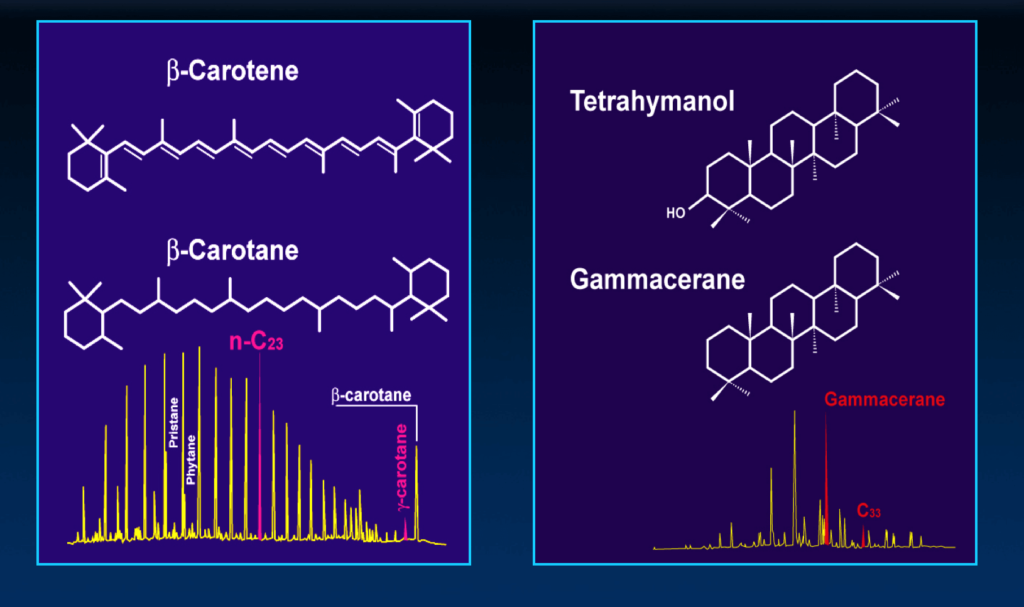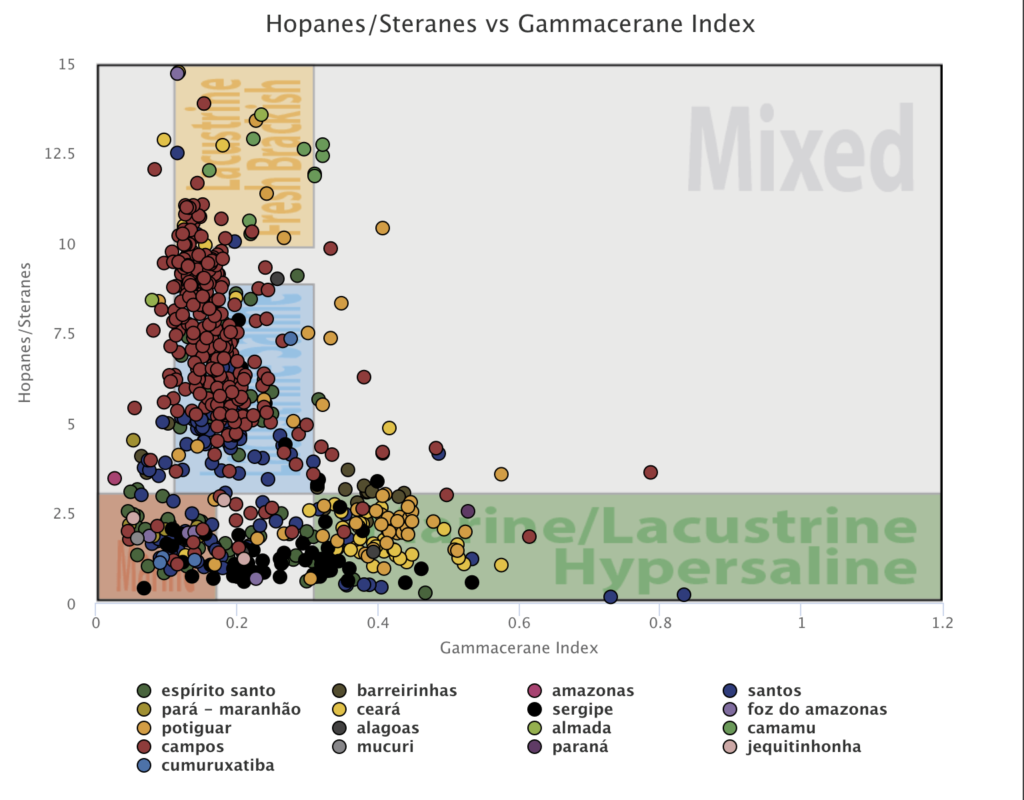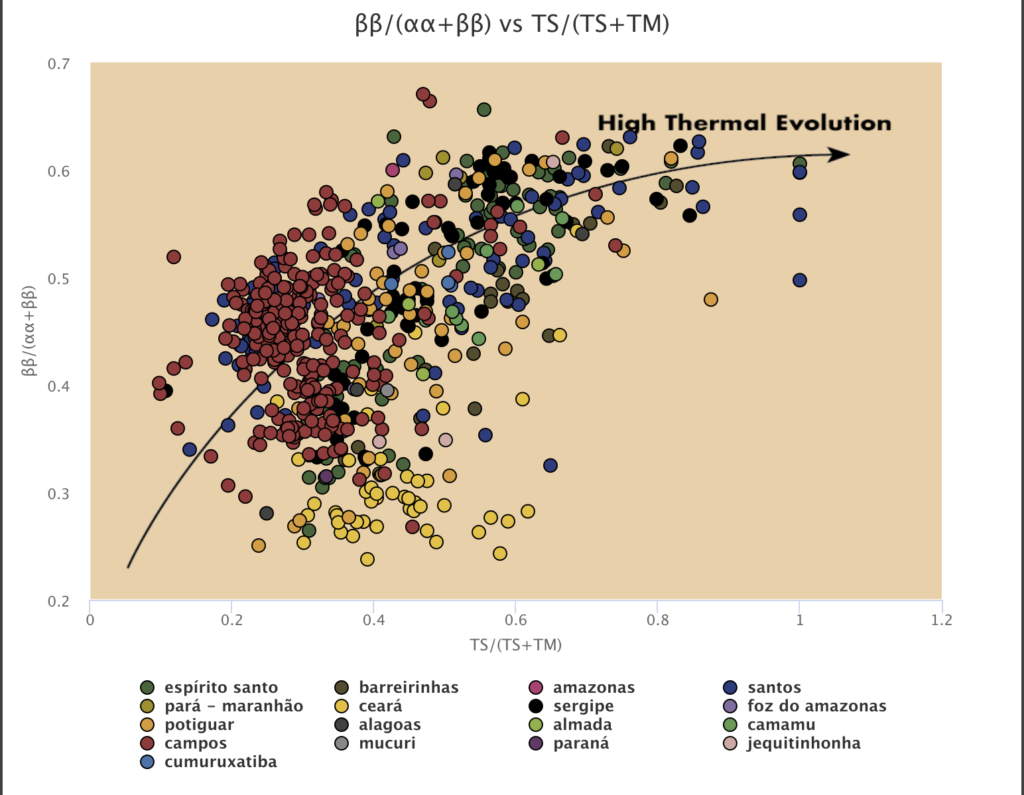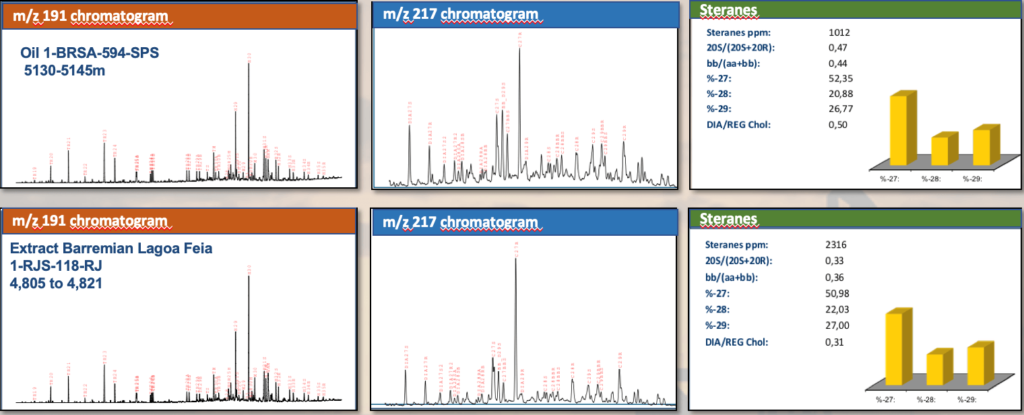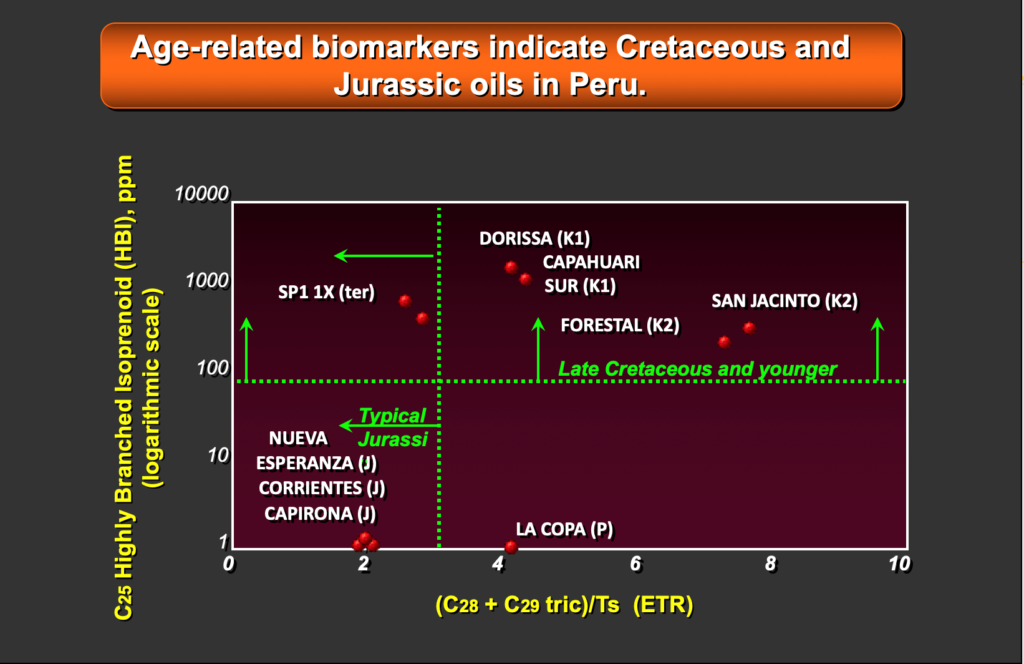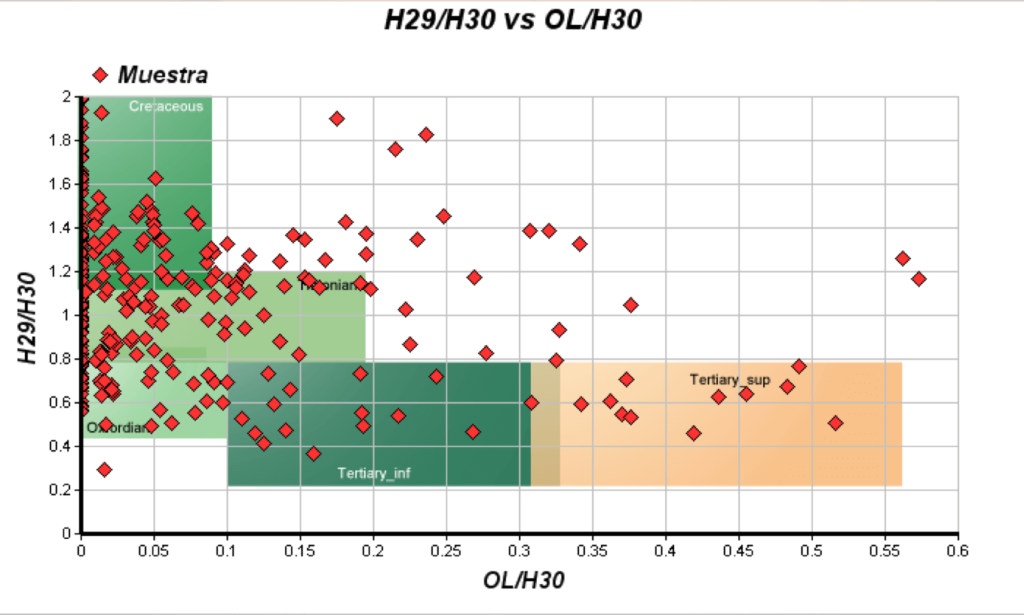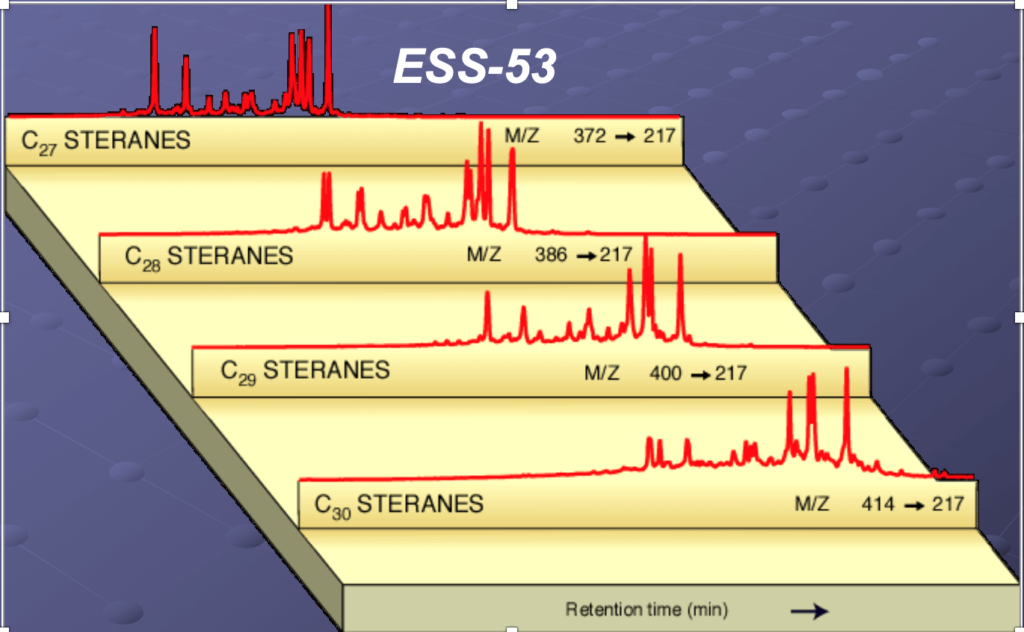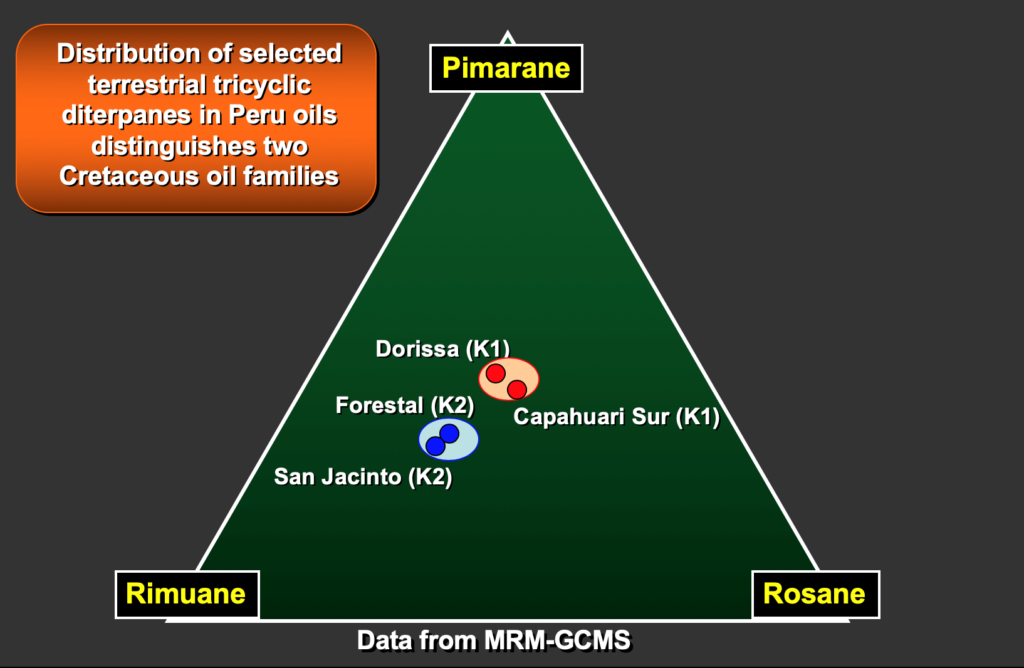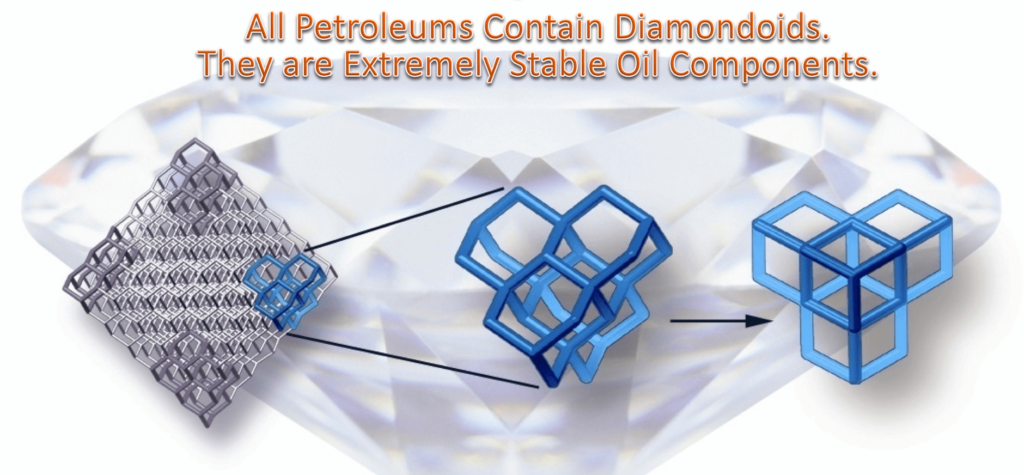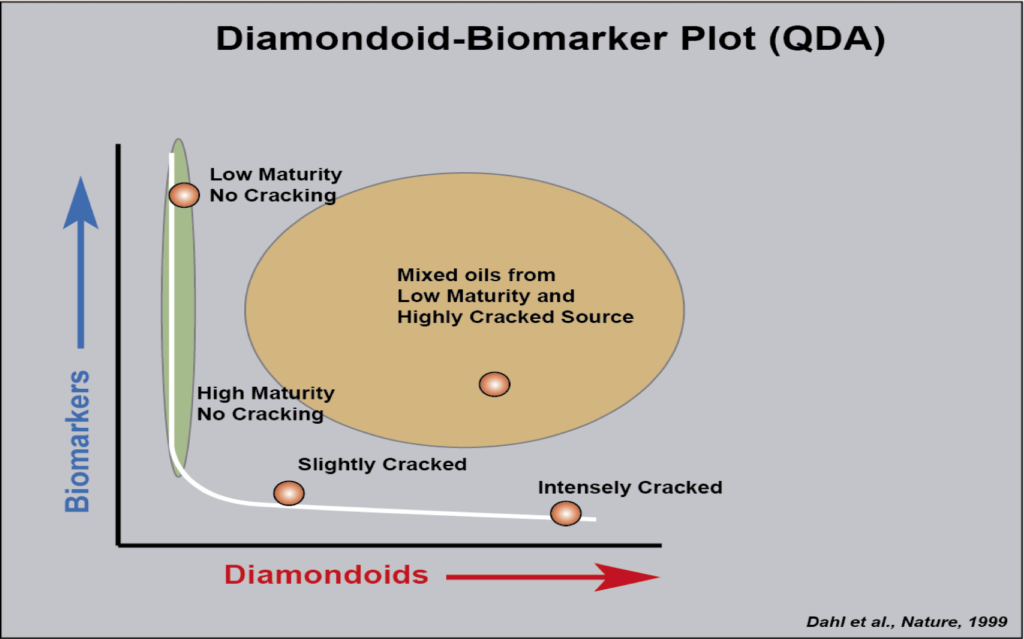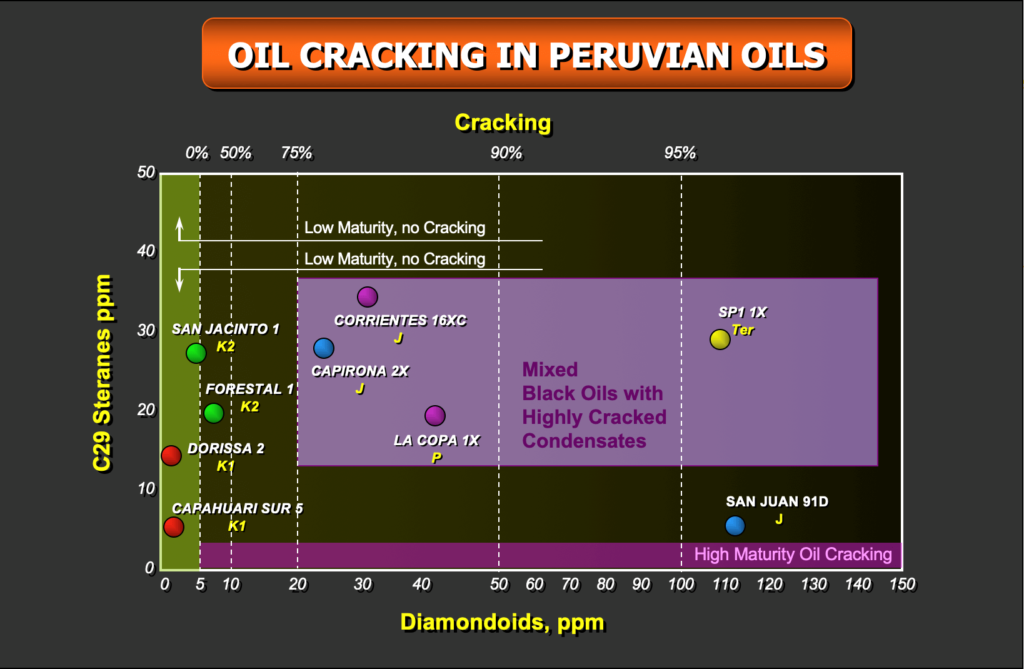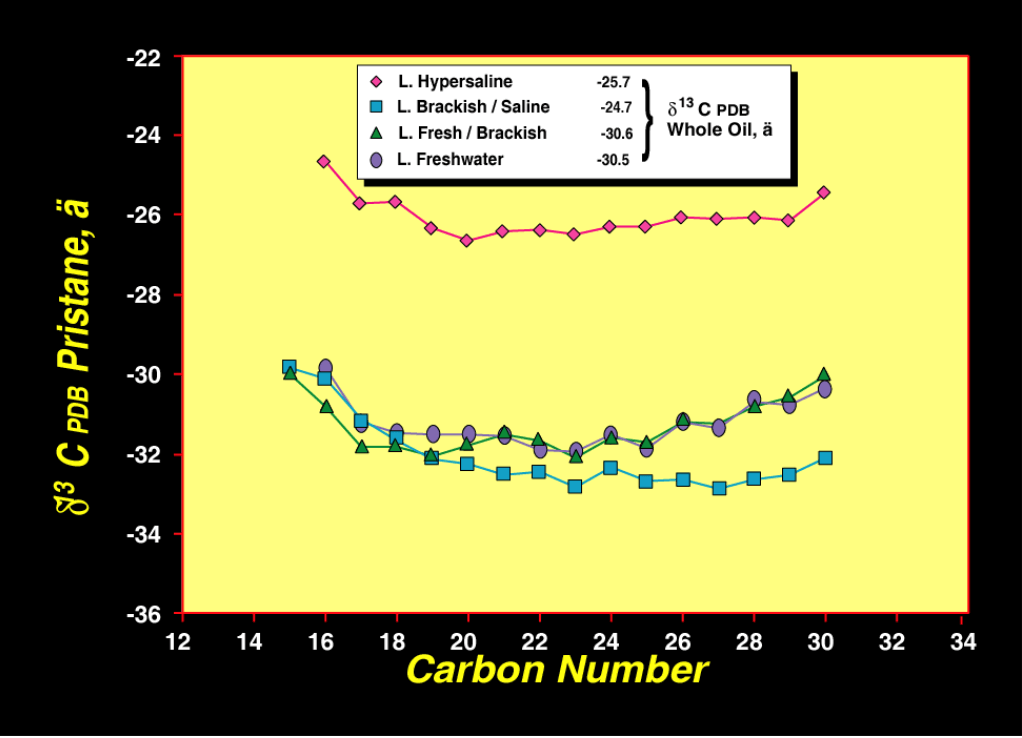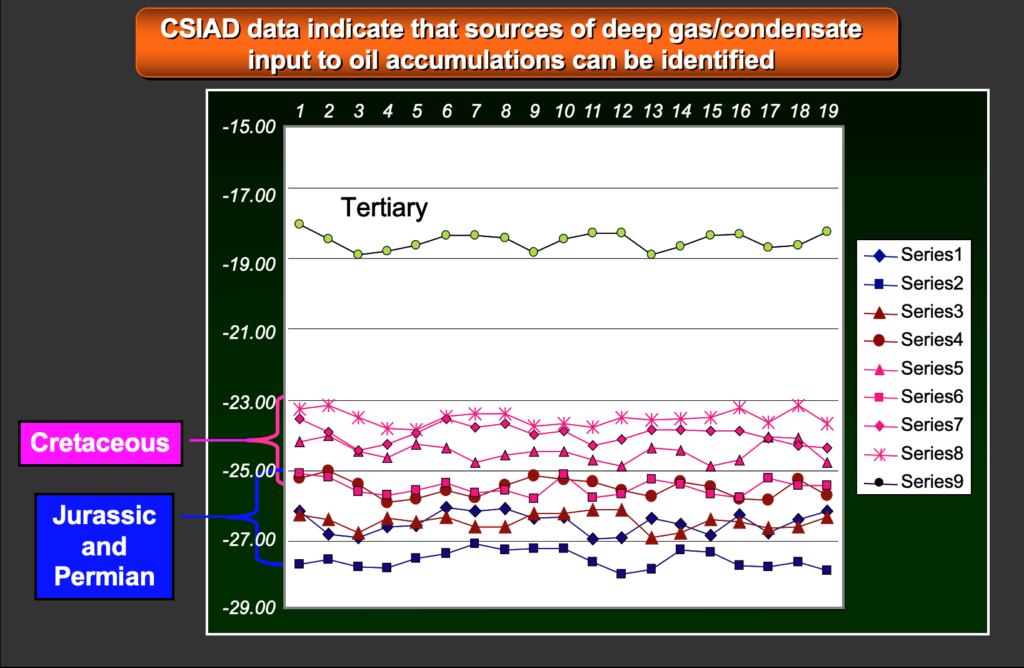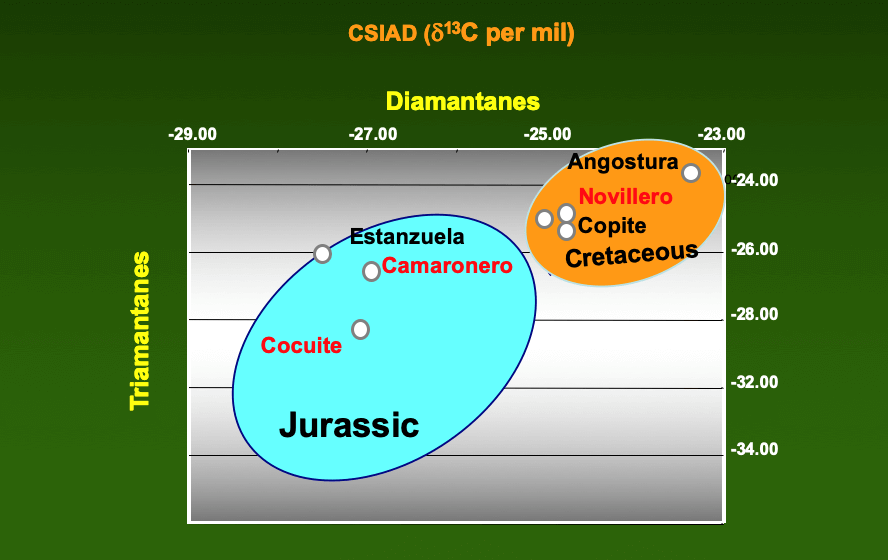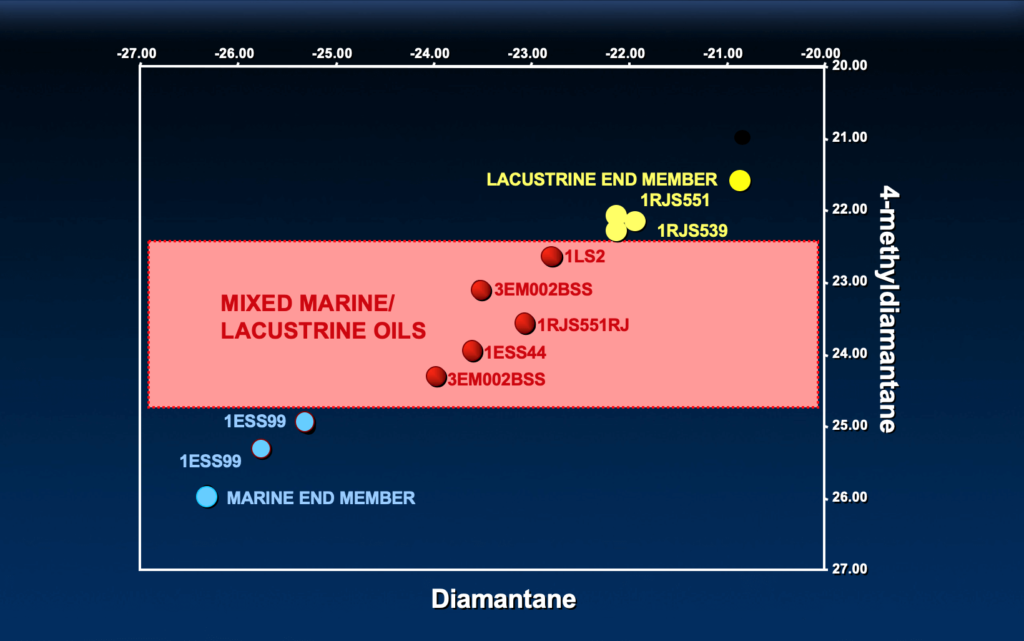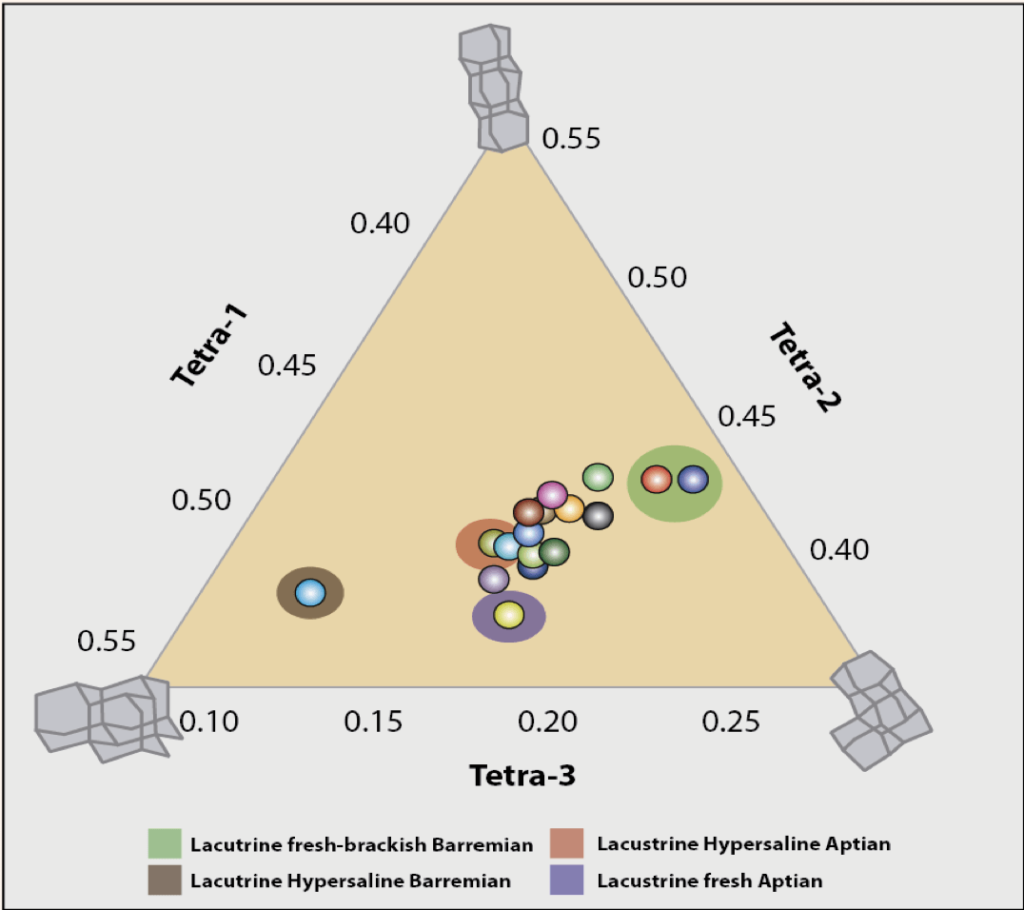Quantitative gas chromatogram/ mass spectrometry (QGC-MS): This method is important to differentiate oil origin, thermal evolution, biodegradation, oil & source rock correlation, and assessment of depositional environment and Age of the source-Rock System;
Quantitative gas chromatogram/ mass spectrometry-mass spectrometry (QGC-MS-MS): This method is critical to differentiate marine from lacustrine sources using the presence of M/Z 414-217 C30 steranes (24-n-propyl-cholestanes from marine algae) and lacustrine organic-facies (C30 methyl steranes). Also, it is the only reliable method to assess age related biomarkers with highly acuracy;
Quantitative diamondoid analysis (QDA). This method provides data that both addresses maturity and can signal whether migrated oil has infiltrated the rock or reservoir resulting in a mixed accumulation. When mixed oil accumulations are determined by this method it opens up a whole new way of looking at the petroleum system, suggesting multiple sources or at least a wide range of maturity of the fluid charges that have reached the reservoir. QDA opens up the door to use other methods of advanced analyses, particularly the diamondoid-based QEDA and CSIA-D methods.
Compound Specific Isotope Analysis of Biomarkers (CSIA-B and Ak): N-alkanes, steranes and most important hopanes can provide data relating to specific conditions of the water system during source rock deposition assessing organic-rich facies differences between lacustrine fresh to hypersaline sequences and prominent restrict to open marine sources. Euxinic water columns have hopanes derived bacteria at depth that impart isotopic ratios different from the hopanes derived from those bacteria in surface waters. This is because anaerobic bacteria at depth in an euxinic water column can use isotopically light recycled CO2 from respiration and biogenic methane as carbon sources; whereas, cyanobacteria near the surface of the water column use isotopically heavier atmospheric CO2. These factors and relationships are critical do differentiate and coevolving mixtures from multiple source rock facies.
Compound Specific Isotope Analysis of Diamondoids(CSIA-D) provide the only proven method to indicates deep gas/condensate sources to mixtures with shallow black oil, correlate highly mature oils and condensates with source-rock systems. Unlike biomarkers diamondoids are not affected by advanced maturities or biodegradation. This method detect, quantify and correlate multiple and complexes oil mixtures.
Quantitative extended diamondoid analysis (QEDA): Analysis from extended-rings diamondoids provide the only proven method to correlate highly mature oils and condensates Unlike biomarkers and bulk isotopes, diamondoids are not affected by advanced maturities even through maturity in the dry gas window. These methods are used to correlate highly mature oils and condensates back to source rocks and black oil, detect and correlate multiple and complexes oil mixtures. Correlation between black oils is also a big advantage of the diamondoid correlation methods
